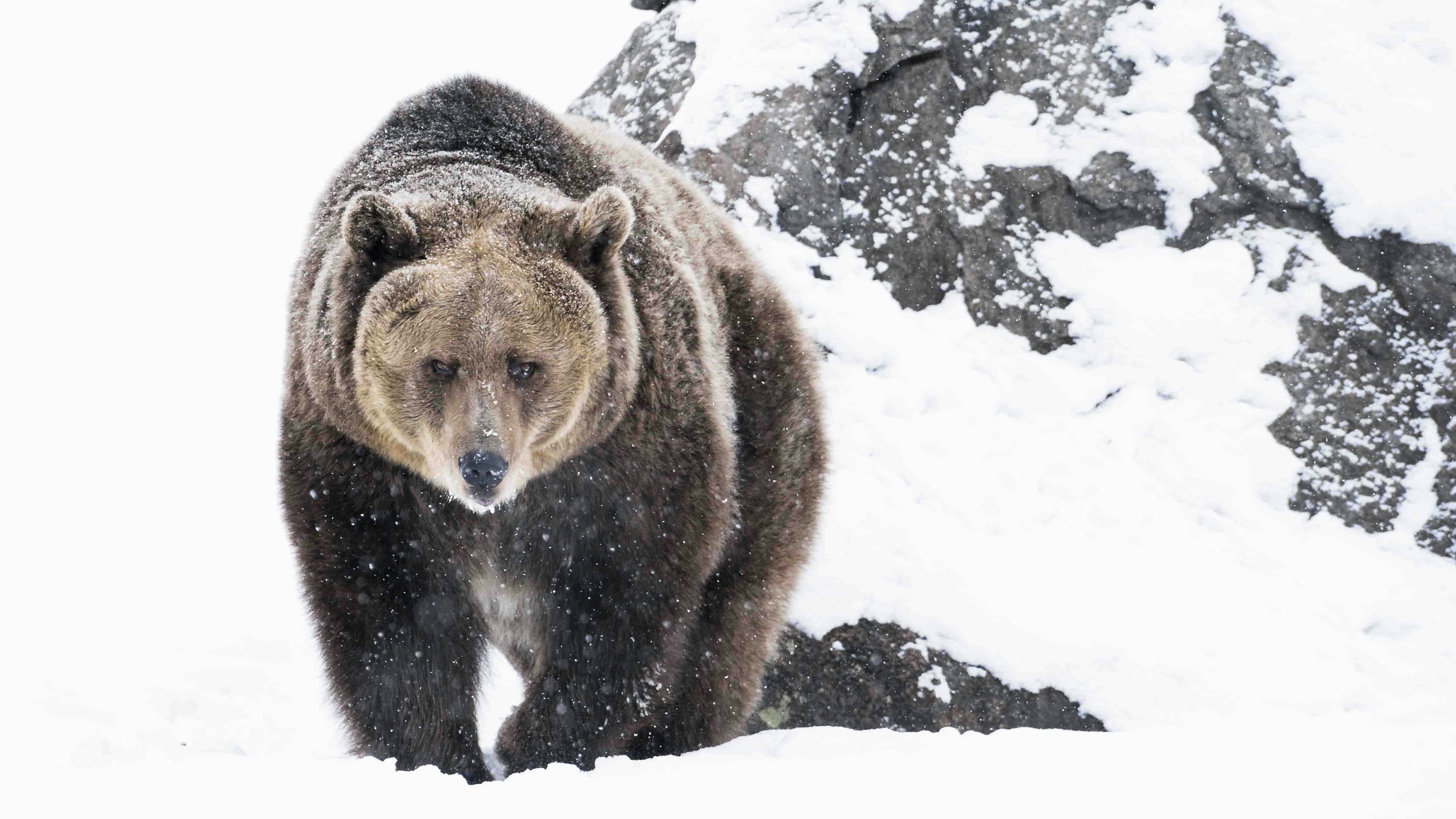While there’s a push for Montana’s and Wyoming’s grizzly populations to merge, there’s no mass migration of bruins planned to make that happen.
If grizzlies transplanted from Montana’s Northern Continental Divide population start showing up in Wyoming, they’ll come in a slow trickle, as in just a few bears per decade, a wildlife biologist said.
Montana is on track to transfer perhaps two northern grizzlies into the Greater Yellowstone Ecosystem, much of which is in Wyoming, this next summer, said Frank van Manen, supervisory biologist for the U.S. Geological Survey’s Interagency Grizzly Bear Study Team.
And if the grizzly transplanting program continues from there, it will likely involve only up to about a half-dozen grizzlies “per bear generation,” or about every 14 years, he told Cowboy State Daily. That could add up to about two to four bears per decade.
While boosting genetic diversity by mixing grizzly populations is important, the Greater Yellowstone Ecosystem grizzlies are in no danger of inbreeding or other serious genetic problems, van Manen said.
“We’re not in a dire situation,” he said. “It’s good that it (genetic diversity) is being addressed, but were not in a dire situation where it’s threatening the Yellowstone population.”
One-Way Transfers
Grizzlies in the Greater Yellowstone were on track to be delisted from federal protection in 2018. The Wyoming Game and Fish Department had even set a grizzly hunting season to open that fall.
However, a federal judge blocked the delisting before the hunting season opened. One of reasons cited was concern over the relative isolation of the Greater Yellowstone bears in Wyoming, Montana and Idaho. Thus, a lack of connectivity and genetic mixing with other grizzly populations.
Transplanting grizzlies from the Northern Continental Divide population is one way to address that concern and possibly make delisting more feasible, van Manen said.
As to whether any Wyoming grizzlies could be sent the other way, that’s not necessary, he said.
Montana’s northern grizzlies are connected to broader populations of grizzlies in Canada, so genetic exchange isn’t a concern in that area.
Probably Females Only
The ideal candidates for transplants will be young female grizzlies with no history of conflicts with humans, van Manen said.
Young female bears are the least likely to wander too far from the areas they’re released in, he said. And pregnant females would be an even better option.
Cubs born in a new location will immediately bring genetic diversity to the Yellowstone ecosystem, he said.
Transferring animals such as grizzlies between jurisdictions can be complicated, van Manen said.
In addition to agreements between states and the U.S. Fish and Wildlife Service, grizzly transplants have to be cleared with land management agencies such as the U.S. Forest Service in the release zones.
Can The Bears Do It On Their Own?
Meanwhile, grizzlies could start intermingling on their own. The leading edges of the Greater Yellowstone and Northern Continental Divide populations are a scant 35 miles apart in southwest Montana.
Greater Yellowstone DNA was found in a grizzly in the Snowy Mountains in Montana in 2021. And there might be other instances of grizzlies wandering between the populations that have gone undetected, van Manen said.
Grizzlies also have been showing up around the edges of the massive and remote Selway-Bitterroot ecosystem in central Idaho, he said.
“That’s a big chunk of suitable grizzly habitat,” and the U.S. Fish and Wildlife Service is wrapping up an environmental impact statement regarding the feasibility of a new population there, van Manen said.
He said he’s optimistic that grizzly transfers between the Northern Continental Divide and Greater Yellowstone will be part of larger trend of bears thriving across the region.
“It’s a proactive approach that addresses that concern (over genetic diversity),” he said. “It should work. There’s every reason to think it will. And in the meantime, we can hope that genetic exchange occurs naturally, and then we’ll be in really good shape.”
Mark Heinz can be reached at mark@cowboystatedaily.com.





